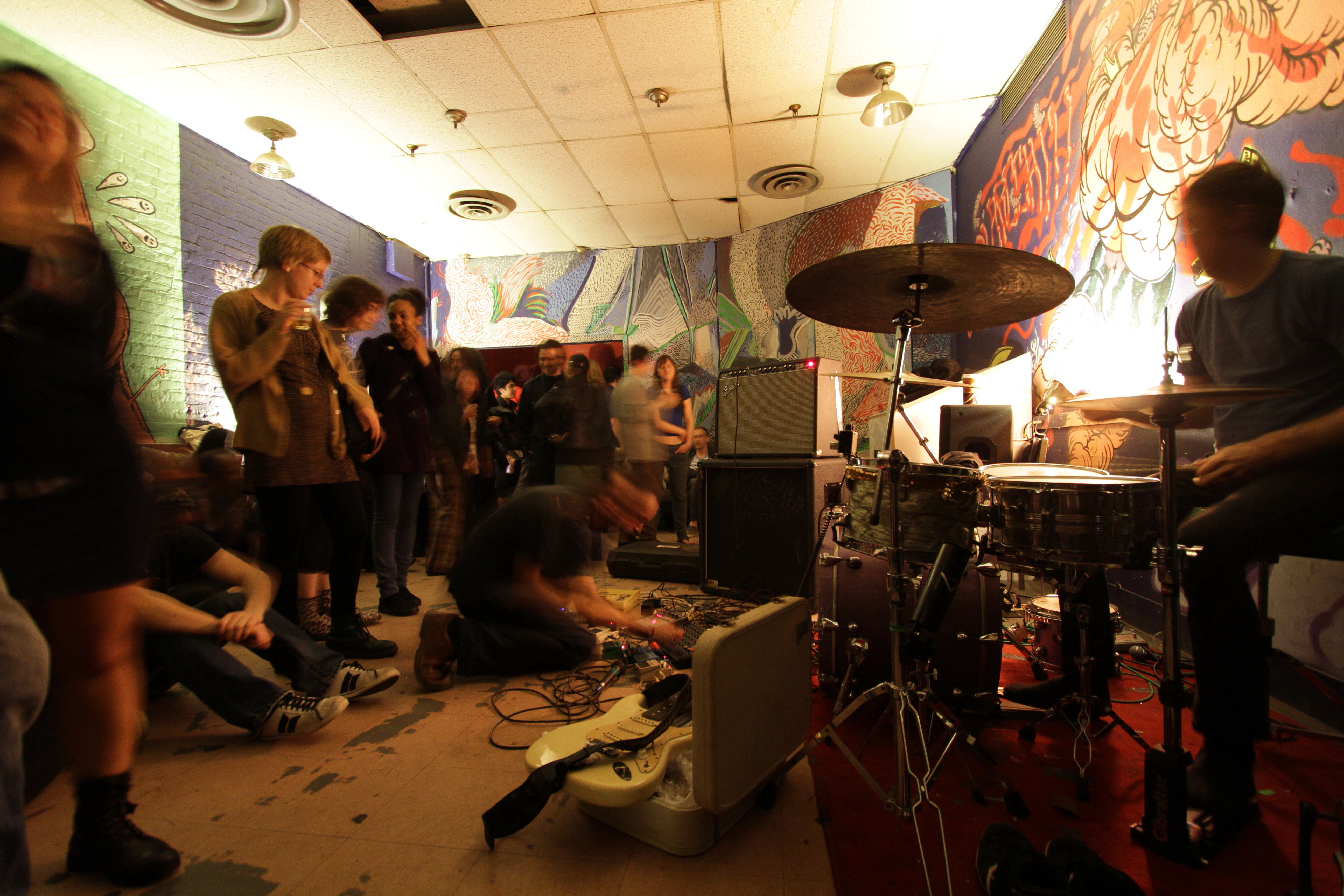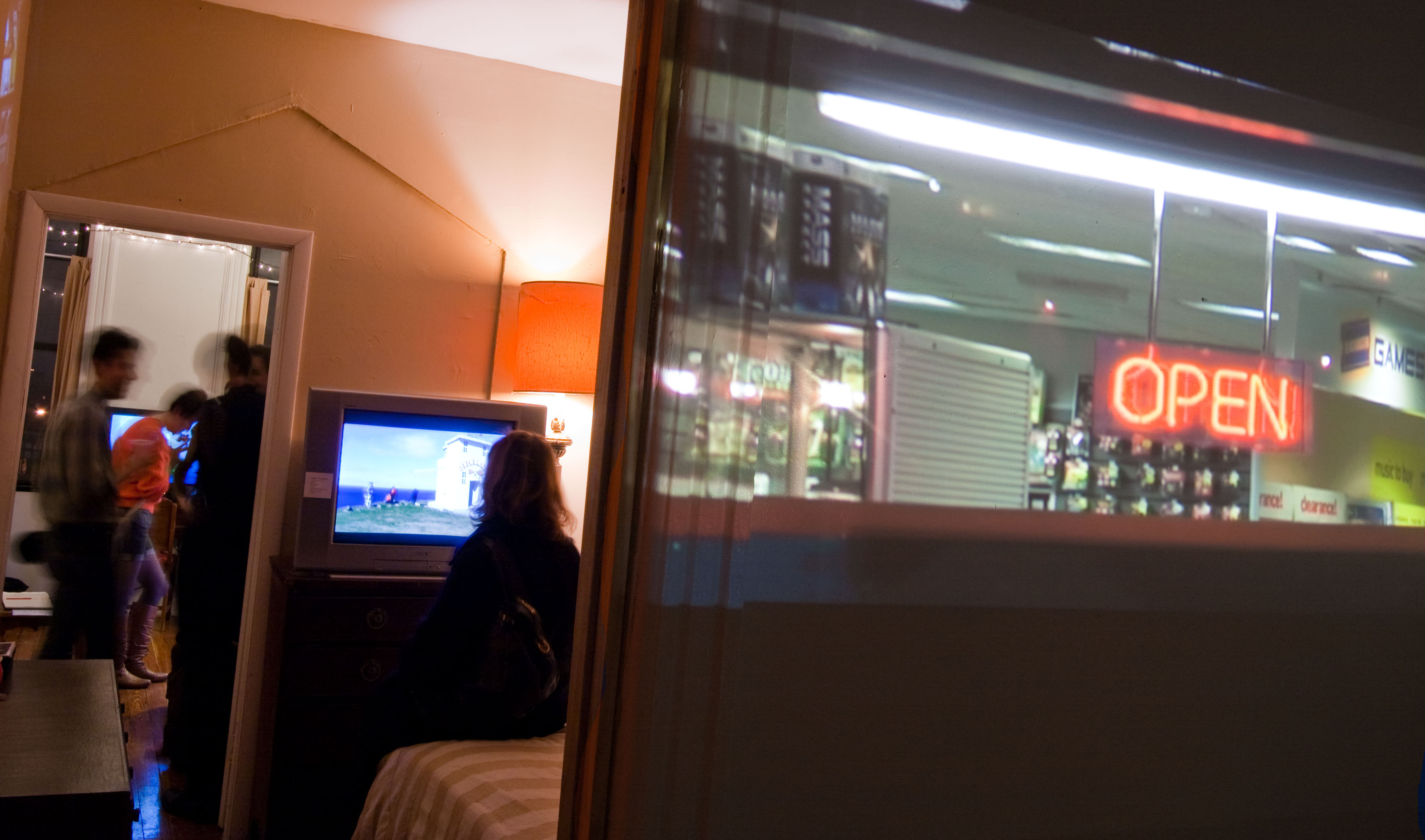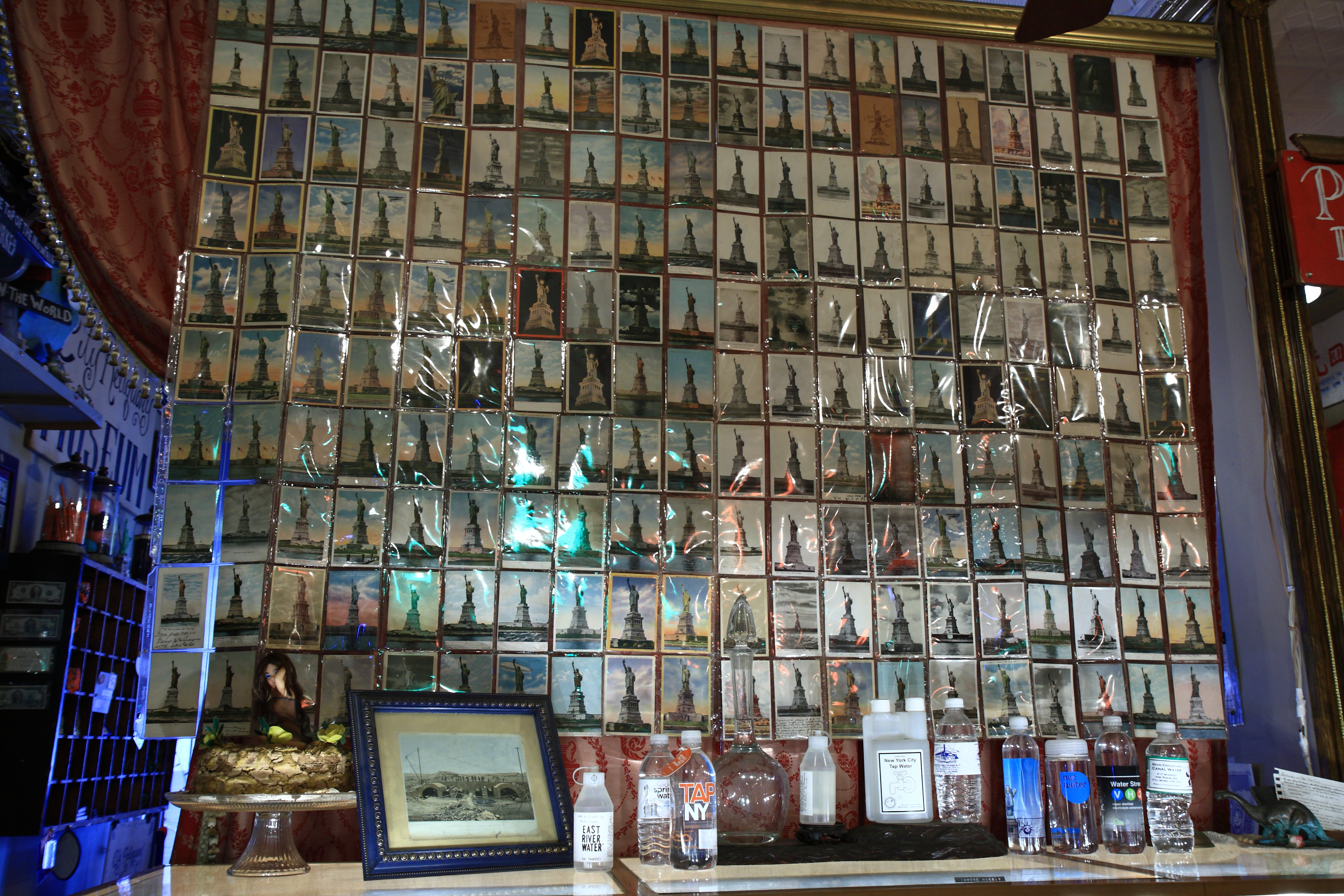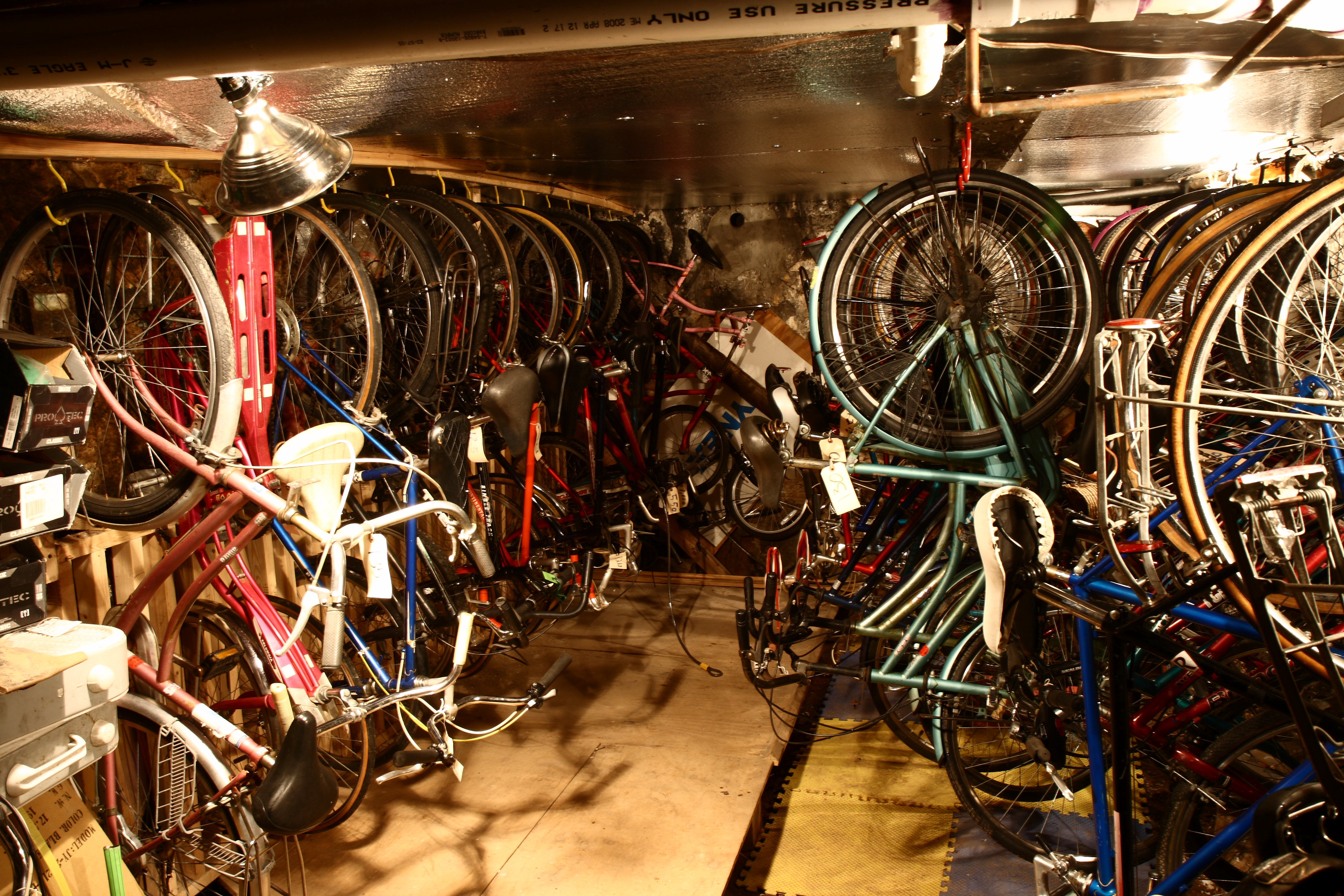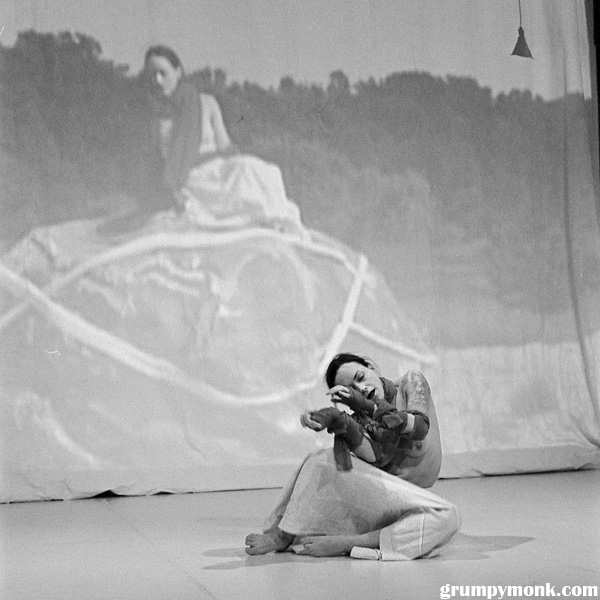death by audio
neighborhood: williamsburg | space type: music venue | active since: 2007 | links: website, myspace
I’ve been to Death By Audio a few dozen times, but somehow I always forget how cool it is. My friends’ doom metal band Bloody Panda played a brain-meltingly loud show there a few years ago, and I saw my other friends’ band Dead Dog there last summer. Todd P books there a lot. The shows are always raw and raucous, which of course befits one of the early Williamsburg DIY venues.
When I went a few weeks ago, the show was as crazy as I expected. First was Bubbly Mommy Gun, a weird psych rock outfit, who had their saxophonist hiding behind the wall and playing through a tiny window. Next was Mugu Guymen, a duo with the guitarist kneeling over dozens of pedals and the drummer just going crazy, playing faster than anyone I’ve ever seen. Last was Makoto Kawabata (from Acid Mothers Temple) with Pikachu (from Afrirampo), who flailed around and leapt up onto her drum kit and grabbed a microphone from out of the ceiling to scream into. Amazing, amazing show.
Q&A with Edan, Death By Audio’s booker
brooklyn spaces: Give me a quick history of the space and your involvement.
Edan: Death by Audio was a pedal company before it was a show space. Oliver Ackermann from A Place to Bury Strangers moved in in 2005. At first they rented out the front part as a photo studio, but after a while that didn’t pay the rent, so they started throwing shows. I worked the door at some of the earlier shows. I was booking shows around town, but I just kind of started bringing everything here. Then one of the bookers didn’t want to do it anymore, and I took over.
brooklyn spaces: Is there a particular kind of music that’s generally the focus?
Edan: It’s whatever I want to listen to. I wouldn’t have a show here if I didn’t want to see the band. But I feel like I have a pretty broad musical spectrum. It tends to go toward noisier music, heavier rock, heavier metal, and weird harsh noise stuff. But there’s all kinds of pop here too. If it sounds awesome, and if I think it’s going to be cool live, we put it on.
brooklyn spaces: What are some favorite shows you’ve booked or seen?
Edan: Last summer we had Ty Segall, Charlie and the Moonhearts, and a bunch of other awesome bands. That show was amazing. The best part of that was Ty and Michael had a project together before that, and they did a duet at the end as an encore. That was really cool, it was something I never thought I’d see. And all kinds of band reunions, or people saying they saw videos on YouTube of bands playing here and were like, “Oh man, I want to play there.” Universal Order of Armageddon said that, Party of Helicopters said that. Paint It Black, we did a show for them, that shit sold out in an hour. I never even sell advance tickets for shows, and that one was gone in a day, which was crazy.
brooklyn spaces: Do you have a struggle or a triumph you want to share?
Edan: I have all kinds of trials! The more it’s a personal thing, the more effort you put into it, the harder it is when you lose to things like money. That’s not what it’s about, but you know, sometimes bookers come in and put holds on dates and tell me I’m going to get some band and I’m like, “That’s fucking awesome, they’ll be great.” And then a month later the booker’s like, “Oh, we were never actually going to bring the show there, we were just holding it in case we couldn’t find a bigger space.” That kind of stuff is soul-crushing. Or there’s always some show that I’m missing a band on, and I end up sitting in front of a computer for hours, emailing tons of bands and getting so many nos. It takes a long fucking time. Then I go to work at like seven, run sound all night, get off at three in the morning, have to clean the place twice. But it doesn’t matter, because I get to see all the shows, you know? I’m always excited about anything that’s here.
brooklyn spaces: What are your thoughts about being in South Williamsburg these days?
Edan: Some of the first underground DIY shows I saw were around here. There’s a place that’s just now newly a condo where I watched Lightning Bolt play in a dirt pit, and Liars, and Panthers, it was a really sick show. Glass House Gallery was one block away, I saw tons of shows there, I saw Dirty Projectors play to like three people there. I grew up on that, in my adult life, my Brooklyn life. I’ve watched Williamsburg go from totally weird-ass back streets to something more normal, although people still walk down here thinking it’s the edge of the world. I used to have people leave after their shift and get mugged for the $20 they’d made, but it’s not fucking like that now. It’s totally safe, totally normal. Death By Audio and Glasslands and 285 Kent and Glass House and Main Drag Music and so many other spots, we’ve helped change what’s safe and unsafe.
 brooklyn spaces: What are your goals for the future of the space?
brooklyn spaces: What are your goals for the future of the space?
Edan: Just to continue, to maintain the quality, and to keep appreciating it. I don’t want to get bored of doing this.
***
Like this? Read about more music spaces: Silent Barn, 285 Kent, Shea Stadium, Bushwick Music Studios, Newsonic, Dead Herring
